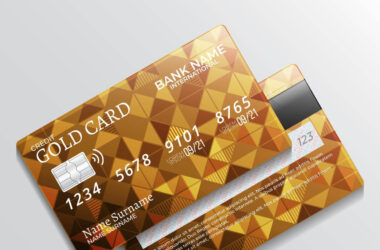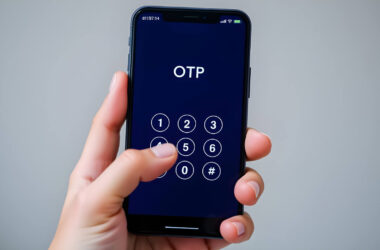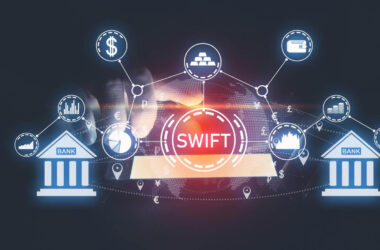A couple of years ago, most transactions were carried out with both parties meeting physically. Money was exchanged directly and everyone went their separate ways. It was hard to pull a wool over anyone’s eyes, so to speak, when it came to trading. You saw the goods, you saw the seller and you could hand them the money and walk away with the goods. It was quite simple, really.
Fast forward to today. It’s the digital age and the world has evolved quite a bit – and will do so many more times. People can now order and pay for goods and services from the comfort of their homes. Both parties – buyer and seller – don’t even have to meet for transactions to be carried out. Thanks to online banking, paying for goods and services is much easier than before. It comes with inherent risks too, though, as there are fraudsters lurking in the woodwork, eager to hoodwink unsuspecting people and steal their money.
In this post, we shall be looking at some guidelines you should follow to ensure that your online transactions are safe and, most importantly, your money isn’t stolen.
1. Don’t Enter Your Card Details in an Unsecure Website:
While shopping or paying for anything online, be careful not to enter your card details on any website unless you are confident that the site is secure. One thing you can do is check the URL of the site. If it starts with http:// instead of https://, you’re strongly advised to not enter your card details on such a site. Data entered on http sites are generally insecure and may be easily retrieved by hackers. Sites with the https protocol promise more security. Generally, you should make sure that you trust the site to be secure before entering card details for any transaction.
2. Never Reply an Email or Text Requesting For Your Card Details
People have been known to get text messages and emails requesting that they send their card details for some reason or the other. This is an obvious fraudulent message. Some fraudsters have gotten quite clever with it though. They can clone your bank logo and header and send an email to you. Also, they can send a text from a software that makes it look like it came from the bank. First off, the bank will never ask that you send such information via email or text. Even if you do get a call, supposedly from the bank, asking for such details, you should decline. Better to call your bank afterwards to confirm that the call came from them.
3.Protect Your PIN:
This one can’t be stressed enough. You should never give out your PIN number to anyone. Do not write it in a piece of paper and tuck in your wallet. Better yet, try as much as possible to never carry your card in your wallet. In the unfortunate event that your wallet gets missing or stolen, it makes it all too easy for anyone to have access to your money. Also, you should never write your PIN number on your card. If you have to write down your PIN, write it in a file or paper you keep in a secure place. – not your wallet.
4. Check Your Bank Statements Often:
As a general rule, you should endeavour to have a look at your bank statements at least once a week. This lets you keep track of every transaction that occurs on the account and, in the event of any suspicious transactions, you can notify the bank early enough. It also helps to have alerts set up for your account – to get notifications on any transactions in real time. There’s a growing trend where you have people disabling alerts for their phone (in a bid to not incur extra charges and be rid of those pesky notifications). This may prove risky if you have no way of keeping track of transactions on your account. Better to have email alerts setup for the account on an email you readily access.
5. Avoid Using ATMs That Aren’t At a Bank
When going shopping, be careful to use a bank ATM if you need to use cash. Only use ATMs at malls or other non-bank ATMs as a last resort. It is generally easier for a thief to tamper with and install a card phishing device at an ATM machine at a mall than at a bank. Bank ATMs are relatively more secure because they have cameras installed and there is usually a security guard nearby.
6. Always Check That the Cashier Doesn’t Double Charge You Via POS
Barring the rare event that you meet a malicious cashier at a mall, there’s also the chance that you might mistakenly get double charged while making payments via POS. When you hand out your card. Make sure to keep an eye on the transaction process and look at the receipts to confirm that you are billed correctly for your orders.
There you have it. Some of the measures may seem paranoid, but you should always be vigilant in following safety guidelines for online transactions. They greatly reduce the chances of you losing your money online.

Fraud Prevention 101: How Not To Lose Your Money Online
September 25, 2019
Read next
What is CVV in Banking?
May 5, 2023
Table of Contents Hide What Does CVV Stand For?Where is CVV Located on the Credit/Debit Card?What is the Purpose…
6 min read
What is OTP in Banking?
April 9, 2023
Table of Contents Hide What is OTP?Why Is OTP Important in Banking?How is OTP Generated?OTP Implementation in…
7 min read
What is a SWIFT Code in Banking?
March 7, 2023
Table of Contents Hide What is a SWIFT Code?Why are SWIFT Codes Important in Banking?1. Ensuring Accuracy and…
5 min read
How to Get My Access Bank Mobile Banking User ID
May 5, 2023
Table of Contents Hide What is Access Bank Mobile Banking User IDHow to Get Your Access Bank Mobile Banking User…
5 min read









This is a helpful guide for anyone trying to retrieve or remember their Access Bank Mobile Banking User ID. Banking convenience really depends on getting these basics right — secure login, knowing your credentials, and ensuring your app/OTP access is set up properly.
I recently read an article on bitemycoin about How To Create A Cryptocurrency Wallet which gives a good analogy — just like banks require identifying and verifying for accounts, crypto wallets also require secure setup (passwords, backups, etc.).
https://bitemycoin.com/guides/how-to-create-a-cryptocurrency-wallet/
Thanks for writing this; it’s great to see simple, clear instructions for resolving day-to-day banking issues.